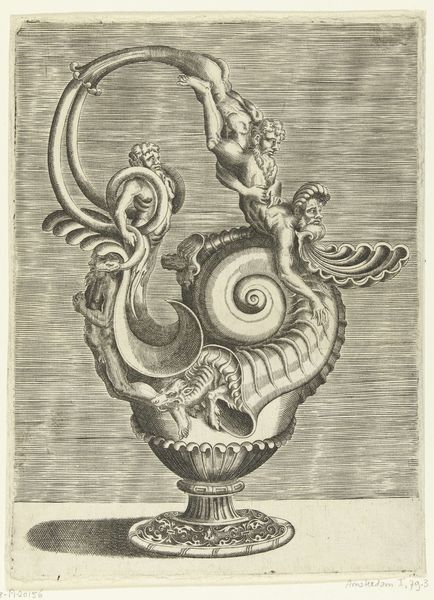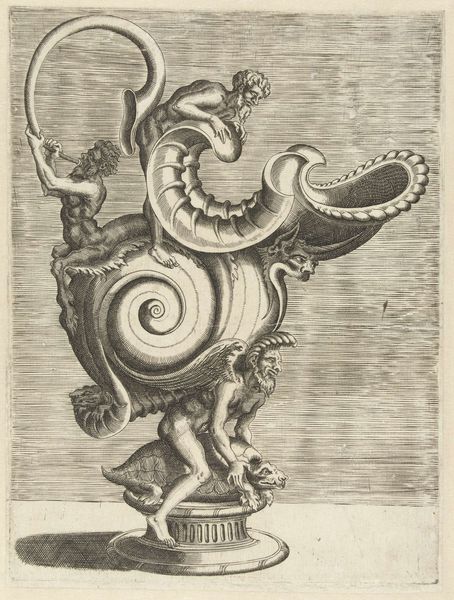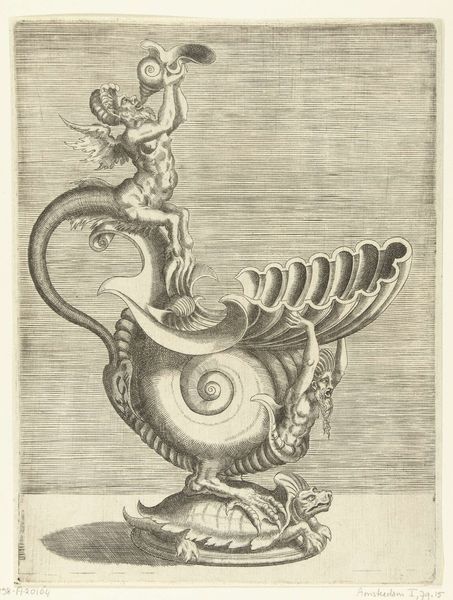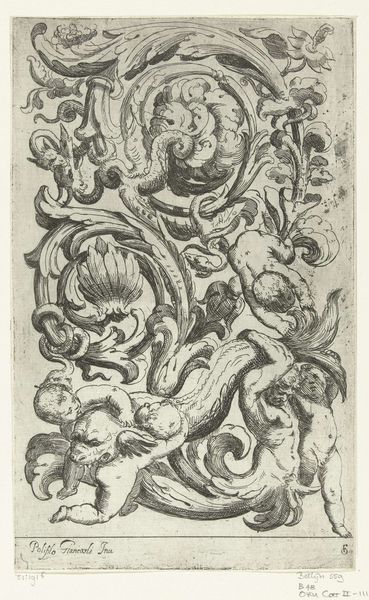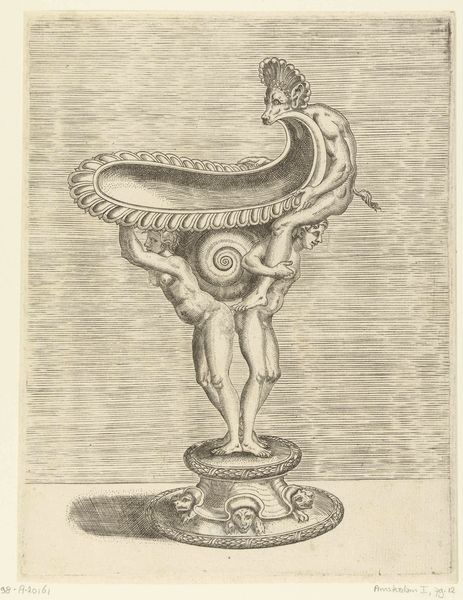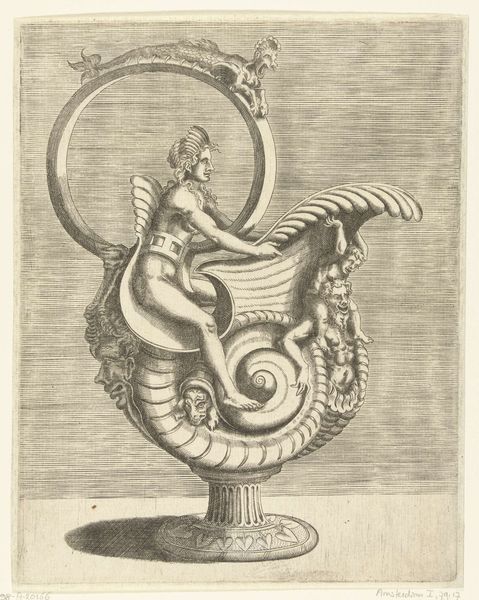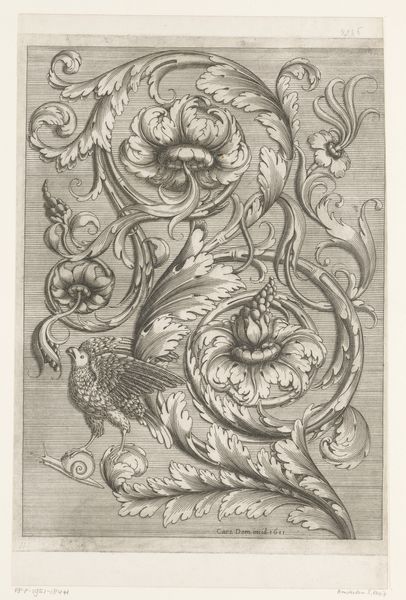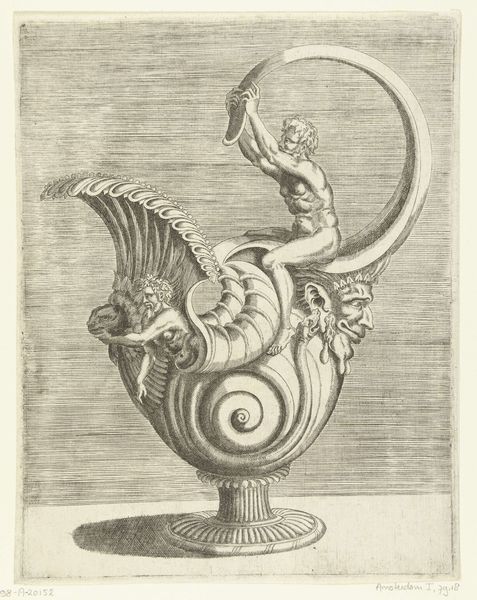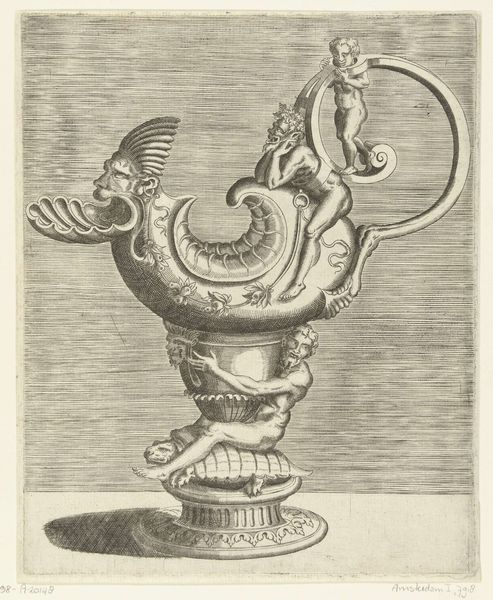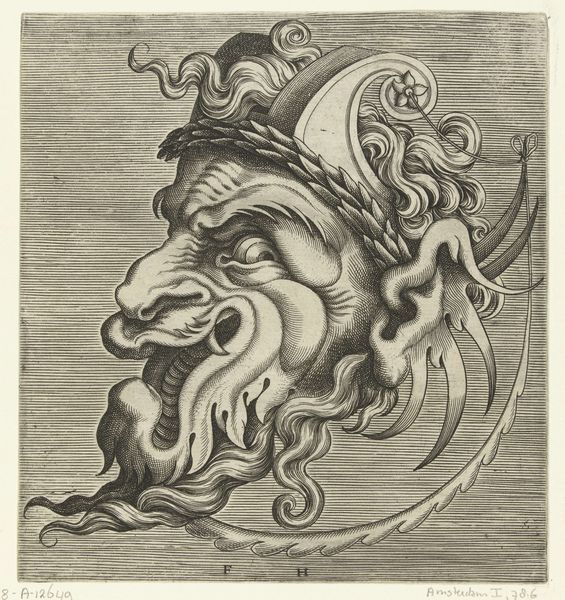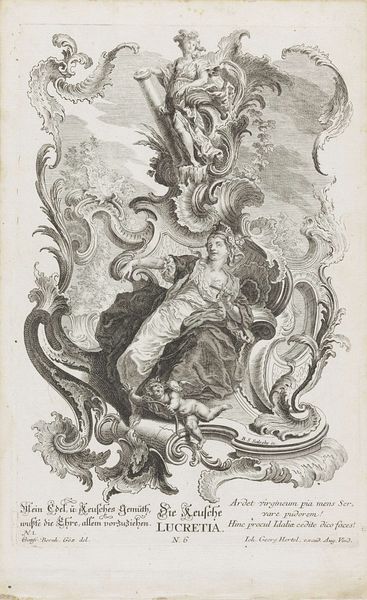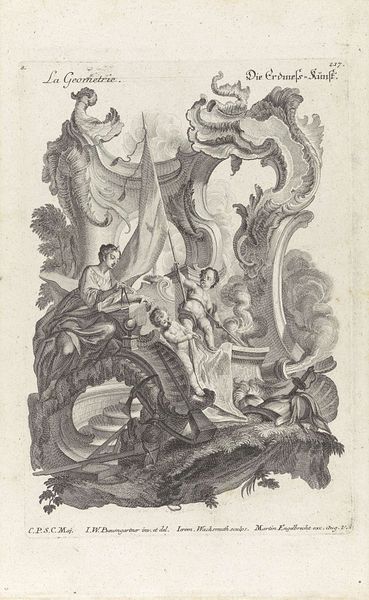
Schaal in de vorm van een schelp, gedragen door een zeemeermin en een zeemeerman 1548
0:00
0:00
balthazarvandenbos
Rijksmuseum
print, etching, engraving
#
allegory
#
pen drawing
# print
#
pen illustration
#
etching
#
old engraving style
#
figuration
#
pen work
#
italian-renaissance
#
engraving
Dimensions: height 224 mm, width 168 mm
Copyright: Rijks Museum: Open Domain
Curator: Look at this intriguing engraving, dating back to 1548. It's entitled "Schaal in de vorm van een schelp, gedragen door een zeemeermin en een zeemeerman," and here at the Rijksmuseum it's attributed to Balthazar van den Bos. Editor: My first impression is that it is quite striking. The swirling composition and precise line work create a captivating sense of movement. There's almost a disquieting energy despite the classical forms. Curator: Disquieting? It appears to be a fairly straightforward design for a vessel or ornament, doesn’t it? The depiction of labor here is remarkable; notice how the sea-maid and man physically support the shell itself, transforming their bodies into structural components. It speaks volumes about value and production in the 16th century. Editor: Perhaps, but it's the arrangement of those figures—the mer-couple supporting the massive shell, and that cherubic figure perched atop the merman—that interests me most. The shell itself is a classic symbol of pilgrimage, rebirth, and feminine divinity. Having them struggle to hold it feels contradictory, no? Curator: Struggle? Or are they presenting? Look closely at the method. The labor itself suggests value. A form born from toil versus divinely presented is critical when considering the rise of artisanal works within a booming economy, wouldn’t you agree? How does it fit within the modes of production during the Italian Renaissance? That's the most pressing aspect of the piece, wouldn't you agree? Editor: Possibly. But I'm drawn to the implied narratives here. Is the cherub blessing their efforts, or is it an additional, unbearable weight? There is, again, that swirling motif; a visual metaphor perhaps, referencing the complexities and the turbulent currents of life. And there is tension between earthly beings with sea legs, if you will, reaching up to hold something ethereal. The shell. It creates a powerful visual story! Curator: Interesting point. I still maintain its core lies within the commentary it makes about human creation, artistic production, and how art functions as commodity in the societal systems of 16th century Europe. Editor: Fair enough. The beauty of art, it always offers multifaceted interpretations! Thank you for your material expertise. It allowed me to dive more profoundly into how symbolic language speaks to our collective subconscious.
Comments
No comments
Be the first to comment and join the conversation on the ultimate creative platform.
